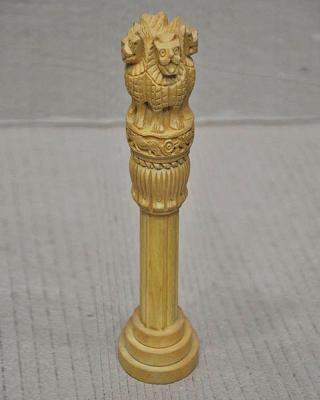
Welcome |
|
|
|
|
|
|
|
|
|
|
|
|
|
|
|
|
|
|
|
|
|
|
|
|
|
|
|
|
|
|
|
|
|
|
|
|
|
|
|
|
|
|
|
|
|
|
|
|
|
|
|
|
|
|
|
|
|
|
|
|
|
|
|
|
|
|
|
|
Information about
Vaishali |
|
Vaishali was one of the first Republican states of India, having an elected body of representatives. Vaishali is situated about 55 kms. to the north of Patna. Vaishali derived its name from King Vaishala, a famous ruler mentioned in the Ramayana. Vaishali was a famous city in the days of the Buddha. The Lord Buddha precahed his last sermons here, before attaining Nirvana or enlightenment. Vaishali is also famous for Amrapali, the beautiful dancer and courtesan of Vaishali, who offered Buddha a mango orchard and impressed by his teachings became a nun. The ruins of the old city have been discovered near the village Besarh on the north banks of the river Ganga. |
|
|
|
|
HIstory of Vaishali |
|
The history of Vaishali dates back to the 6th century BC when it was a flourishing city. The city of Vaishali belonged to the Lichchavis, a clan of Kshatriyas who ruled the territory as a republic. Vaishali was one of the first cities in the world to adopt a republican form of government. This place was visited by the great Chinese travelers Fa-hien and Hiuen-Tsang who took back a piece of sculpture from one of the stupas. It is also said that once the city experienced a terrible plague. The citizens requested the Buddha to visit the city. With his arrival, the plague ended. The Buddha took a liking for the place and visited Vaishali several times to preach his gospel. Here, in the garden of the courtesan Amrapali, he delivered his last sermons and announced his nirvana from the world. Later, Emperor Ashoka built a huge lion pillor here in memory of the Buddha, to commemorate the spot of the last sermon. In 383 AD, the second Buddhist council was also held here to discuss the ten points of Vinaya, the rule of conduct under dispute and two stupas
were erected to commemorate the event. |
|
|
|
|
Tourist Attractions in Vaishali |
|
The Ashoka Pillar, Ramkund, Buddhist stupas and Raja Vishal Ka Ghar are worth visiting places in
Vaishali. |
|
|
Ashoka Pillar
The Ashoka Pillar at Kolhua is also known as Bhimsen-ki-Lathi (stick). It is a single piece of very highly polished red sandstone with a bell-shaped inverted lotus capital 18.3 m high which has a life size lion carved on the top. This Ashoka Pillar was erected by the
Ashoka, the great Mauryan emperor to commemorate the place where the Lord Buddha delivered his last sermon. The Ashoka Pillar has a circular section which tapers like the trunk of a palm tree. It was believed that the colums of this type were the forerunners of the temples, developed from the ancient form of worshipping in the forest. The Emperor Ashoka erected about 30 or more
stupas, but now only the reamains of 10 pillars have been found and those with capitals have been moved to the Indian Museum.
Ramkund
Ramkund is the small tank, also known as the Monkey Tank. According to legends, this tank was dug by the monkeys who offered Buddha, a bowl of honey. |
 |
|
|
|
|
Raja Vishala Ka Garh
The Raja Vishala Ka Garh is now in ruins and certain excavations have been done here. One of the excavated archaeological site in Raja Vishal Ka Garh is an ancient parliament house, which indicates that this republic flourished in the 6th Century B.C. The ruins occupies an area enclosed by a wall about a km in length and 2 m high. The moat surrounding the Parliament House which could hold an assembly of 7707 representatives is 43 m wide. |
|
|
|
Other Places
The other places of historical interest in Vaishali are Chaumukhi Mahadeva temple which houses a lingam carved with four faces of Lord Shiva; the Bhawan Pakhar Temple, where a large numbr of Hindu deities are enshrined at one place and are worshipped together; the Coronation Tank that contains the holy water used for anointing the ruler of Vaishali before being crowned and the Vaishali Museum which has a small collection of regional handicrafts. The excavations carried out in Vaishali have also brought to light the two Buddhist stupas, built in brick with urns that contains the ashes of Buddha. The second stupa was excavated in 1958. |
|
|
|
|
|
|
How to get
there |
|
Vaishali is situated about 55 kms. from Patna and easily connected with Patna, Gaya, Bodh Gaya and
Nalanda.
|
|
|
|
|